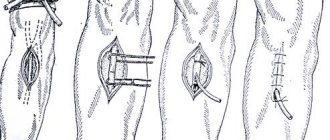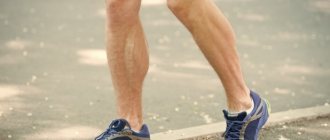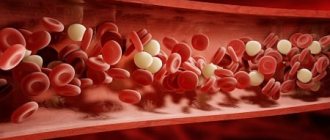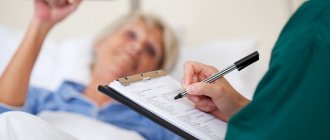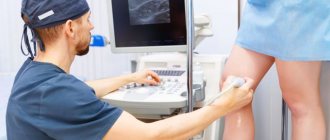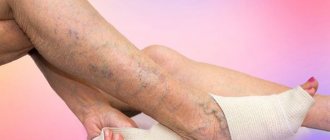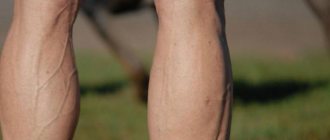Drug addiction has the strongest destructive power. Under its onslaught, all other human attachments, the ability to compassion and love are destroyed. It should be borne in mind that early solution to this problem increases the addict’s chances of salvation. If a person does not do anything to get rid of addiction, his health continues to systematically and very actively deteriorate. It is enough to look at what happens to the veins of drug addicts to imagine the scale of the impact of harmful substances. After all, this is only an external manifestation. And the internal organs suffer much more.
Signs
This habit does not necessarily manifest itself as injection wounds. There are many drugs used orally. And not in all cases the veins in the arms give away a drug addict. And a completely different picture emerges for those who have been using direct injections for a long time.
When determining what a drug addict’s veins look like externally, it is worth keeping in mind that in people who are “sitting” on substances, they look like darkened cords. The body’s most important “communication routes” do not turn red or swell, despite the fact that many do not sterilize syringes.
It is noteworthy that often even the most experienced doctors cannot get into them, not to mention the addicted themselves. And there are reasons for this. Over time, the bed of the veins begins to become overgrown, especially if the person has taken opium and some other types of substances.
Bad veins in the arms and legs: what to do
Have you been struggling with HYPERTENSION for many years without success?
Head of the Institute: “You will be amazed at how easy it is to cure hypertension by taking it every day.
Cardiovascular diseases are a real scourge of modern man. And those who consider the most serious of them to be purely myocardial infarction or stroke are deeply mistaken. Even a disease such as phlebitis can cause irreparable damage to the human body. What kind of disease is this, and how does it manifest itself?
Phlebitis affects important blood vessels such as veins. With it, the walls of blood vessels become inflamed and gradually collapse.
Most often, this term refers to phlebitis of the lower extremities - one of the most common forms of this disease, which most often develops when the legs are affected by varicose veins.
Also, inflammation of the veins often occurs against the background of any infection that has entered the body. In this case, the causative agent of phlebitis is microbes that provoke irritation of the walls of blood vessels, or any other pathogenic microflora.
Our readers successfully use ReCardio to treat hypertension. Seeing how popular this product is, we decided to bring it to your attention. Read more here...
There is a classification of forms of this disease, depending on the location of the inflammatory process. According to this classification, there are:
- Endophlebitis is an inflammation accompanied by damage to the inner lining of the vein. Most often, this form is traumatic in nature, that is, it occurs due to mechanical damage to the walls of the vein. In particular, endophlebitis may occur after a catheter or prolonged stay of a needle in a vein during IV drips. A common side effect is phlebitis after injection with a hypertonic solution.
- Periphlebitis is a form of inflammation that affects the outer lining of the vein. The cause of this disease is usually an inflammatory process occurring in the tissues surrounding the vessel.
- Panphlebitis is a form that simultaneously combines both internal damage to the vein and an external inflammatory process on its lining.
There are two categories of disease progression. So, there is acute and chronic phlebitis. They differ primarily in symptoms:
- The acute course of the disease is characterized by pain in the affected limbs, fever and weakness;
- The chronic form is more insidious - it can be asymptomatic for a long time, appearing only during periods of exacerbation.
Phlebitis is also classified according to the objects affected. That is, according to the types of vessels that are susceptible to the disease.
So, if we are talking about phlebitis of the superficial veins, then it is easier to diagnose - it can manifest itself in the form of compactions, similar to protrusions of subcutaneous fat, located along the vein bed.
In the case when the lesion affects vessels located deep (and most often it is phlebitis of the deep veins of the lower extremities), a person may not pay attention to symptoms such as pain in the limbs, low temperature for quite a long time, because in addition to phlebitis, these can be manifestations anything, even chronic fatigue.
In general, this disease affects both men and women equally. It is not clearly linked to the patient’s age: of course, over time, the risk of development increases due to the general deterioration of blood vessels, but since the main trigger is infection and varicose veins, young people can also be susceptible to it.
Main types of phlebitis
The most common form of this disease is, without a doubt, thrombophlebitis.
As well as the most dangerous: blood clots formed at the site of inflammation - thrombi - can break off, block the pulmonary artery and lead to death.
In addition to the main causes of occurrence, such a disease manifests itself in the case of weak vascular tone, as well as increased blood viscosity. Often, ordinary acute phlebitis of the deep veins develops into this form.
Cerebral phlebitis is a form of disease that affects the blood vessels of the brain. The cause of such inflammation is almost always an infection. Another form of this disease, localized on the human head, is phlebitis on the face. Its cause may be purulent inflammation - an abscess, phlegmon, resulting from some kind of infection.
Post-injection phlebitis is a separate category, since it occurs solely as a reaction to the administered medication.
This may be purely mechanical irritation of the vein walls, or it may also be inflammation as a result of the chemical properties of the injected substance.
In particular, this so-called cubital phlebitis is sometimes used for the benefit of medicine: during the sclerotherapy procedure, an irritating reagent is deliberately introduced into the vessel, which provokes the development of this disease, and, as a result, gluing of the vessel walls.
Migrating phlebitis is a long-term form of inflammation. At the same time, superficial phlebitis affects the veins of the upper and lower extremities, periodically manifesting itself in relapses. Young men are most often affected by this form of the disease. Often, in addition to the veins, inflammation also affects the arteries.
Phlebitis of the collar vein is another common disease of this kind. It covers the largest of the veins of the abdominal cavity. In another way it is also called pylephlebitis.
Causes of the disease
Some of the reasons why phlebitis of various kinds may occur have already been indicated in the description, however, in order to systematize the main ones, we present them in a complete list:
- Infection is the main reason why the vein walls can become inflamed. Most often, the causative agent of this disease is streptococcus.
- Mechanical damage to the vessel - phlebitis can be a reaction of the body to catheterization, be post-infusion in nature, or be a consequence of improper puncture of the vein during blood sampling.
- Chemical effect on the vein. Phlebitis can be caused by a chemical burn due to the administration of a drug. It can also be called specifically for therapeutic purposes (as in the treatment of varicose veins using sclerotherapy).
- Inflammatory process in the tissues surrounding the vessel. Phlebitis of the veins on the face can be a consequence of a boil or abscess. In the case of pylephlebitis, the main cause is inflammation in the abdominal cavity of various etiologies.
- Varicose veins are another cause of phlebitis.
Now that the main causes have been classified, we should take a closer look at the symptoms of this disease. And in the case of phlebitis, it can be quite varied.
Symptoms of phlebitis
They vary depending on the type of disease.
Source: https://MedBur.ru/sosudy/ne-vidno-ven-na-rukah.html
Why do they disappear
When answering the question why drug addicts have no visible veins, it is worth keeping in mind that the harmful substance “burns” them. The same applies to desomorphine, which is popularly called “crocodile”. This is a deadly substance, but it is a cheap drug that was prepared from pharmaceutical drugs by those who for some reason could not obtain heroin. In 80% of cases, people who take this mixture die within 1-2 years, another 20% are able to live for 3-4 years.
Explaining why there are no veins in drug addicts who use such drugs, doctors talk about tissue necrosis and thrombosis. But at the same time, a purulent abscess begins to form in the brain. It only takes five injections for the limbs to begin to rot. It is not surprising that with such effects the veins rot extremely quickly. As a result, the veins of drug addicts (we do not show photos of these lesions for ethical reasons) quickly become unusable.
Then those addicted to deadly substances begin to inject them into other areas. As a rule, the thin veins of the abdomen, feet, and between the fingers are used; it is not easy to get here, but addicted people manage to do it. There are people who, having lost all their veins, began to inject substances into the scrotum. The craving for the potion was much stronger than the pain that arose with it. They did not serve as any obstacle at all.
As a result, necrosis spreads throughout the body. Very soon such a person loses the ability to move and ends up in the hospital. There, doctors amputate gangrenous limbs to prolong the patient's life.
Appearance
In order to timely determine the presence of drug addiction in your loved ones, it is important to be able to distinguish it by external signs. At the beginning of the drug addiction, there is no need to increase doses, since tolerance remains low. The body resists, and therefore a small dose is enough for a person. Subsequently, the required dose begins to increase. This requires a constant increase in the cost of purchasing substances. When the dose becomes so large that there is no longer enough money, a person resorts to homemade drugs, low-quality ones, which have an even worse effect on the body.
At first, the drug addict experiences periodic drowsiness, which is accompanied by depression of the nervous system, blood pressure may drop, sometimes breathing becomes difficult, pulmonary edema begins, hibernation may begin, sometimes this leads to death.
When internal organs are damaged, the liver is usually the first to suffer. The man looks exhausted. There are dark circles under his eyes. Outwardly, he looks seriously ill. The skin becomes gray and the whites of the eyes turn yellow because there is too much bilirubin in the blood. After taking a drug, the pupils of the eyes become narrow, and if there is a withdrawal crisis, they dilate.
Looking at what the veins of drug addicts look like, you can find that they have scars from needle pricks on their elbows. And if a person addicted to harmful substances injects himself several times a day, the veins on the back of his hand are the same.
To hide such marks, he will wear long sleeves and hide his eyes under tinted glasses. If a person uses opium for a long time, his teeth will be yellow. They quickly deteriorate and begin to fall out.
Since opium is able to relieve pain, a person does not experience pain. However, during withdrawal, toothache is a symptom. At the same time, when someone mistakes it for a manifestation of “withdrawal”, it often happens that the teeth hurt not because of the withdrawal of previously taken medications, but because they are already spoiled.
Taking narcotic drugs is accompanied by a constant weakened state of the body and infections. As a rule, the veins of a former drug addict are replete with scar changes. These are traces of many unsterile injections. Similar phenomena occur among young drug addicts.
Prevention
Preventive measures aimed at preventing the swelling of veins on the surface of the skin of the hands come down to reasonable exercise and a healthy lifestyle.
They include:
- charging;
- quitting smoking, alcohol and coffee;
- taking a contrast shower;
- balanced diet.
Veins are blood vessels that carry blood to the heart. Depending on their location, they can be deep or superficial. Much more often the source of problems are superficial veins. They may expand, change color, or become hard. Most often, hardening of veins is observed on the arms, legs or penis. Let's discuss the possible reasons for the appearance of hard veins on different parts of the body.
Addict's veins
The holes through which a person delivers toxic substances into his body are divided into disposable, reusable and overgrown. Disposable ones are found in people with this addiction all over the body and sometimes in the most unexpected places. Once they are used, they become overgrown.
While reusable holes are used most actively. “Hooked on the needle” treat such people with reverence. There are cases when they called them by separate names; the meaning of these nicknames can be difficult to trace. Sometimes the meaning lies on the surface - “well”, “metro”.
The characteristic veins of a drug addict can be found anywhere on the body - not everyone has them only on their hands. For some, the veins on their limbs are not used at all; they have become overgrown. But there are holes all over the body.
It is noteworthy that some “sitting on needles” also call the vessels on the body in a special way. They note their physical condition and suitability for taking the next dose. The last factor is decisive for the name.
When injected, blood is released. Part of it remains in the syringe, and the other is released to the surface. Sometimes it accumulates under the skin.
Etiology
Most often, phlebitis is a consequence of varicose veins and infection of the blood vessel wall.
Other reasons for the development of the inflammatory process:
- Violation of the integrity of the skin. Through wounds, tissues often become infected with streptococcus.
- Vein puncture.
- Collection of biological material from a vessel.
- Intravenous injections.
- Burns.
- Entry of an allergen into the body.
- Excess body weight.
- A lifestyle that does not involve physical activity.
- Various types of injuries requiring limb immobilization.
- Long-term bed rest.
- Regular high-intensity physical activity.
In addition, women during pregnancy often complain that a vein in the leg has become inflamed. The doctor should tell you what to do, since taking most medications is contraindicated during the gestational period. But this condition cannot be ignored. Although it is associated with a natural increase in blood volume, it can lead to irreversible consequences.
General signs
Thus, changes in the veins of drug addicts are very typical. They thicken and resemble a kind of tourniquets. They are accompanied by many scars. On the walls of the veins of drug addicts there are often suppurations and abscesses. Sensitivity decreases, and sometimes obliteration occurs.
Explaining why veins disappear in drug addicts, doctors say that the reasons lie in the fact that the tissues become sclerotic. In other words, the gaps begin to narrow. This happens with sufficiently long-term use of harmful substances.
Impact on the body from the inside
Opiate drugs have the worst effect on veins. Therefore, the question of why veins disappear in drug addicts usually concerns those who take opium or desomorphine. Like, some people injected heroin for 5 years, and the veins appeared. But after just five doses of desomorphine they disappeared completely. The harmful mixture “burned” the veins in the body.
When desomorphine was just beginning to spread, doctors at first could not understand what was happening to the insides of the patients who came to them: tormented veins that resembled jelly raised many questions. The body was destroyed from the inside. His arms and bones were rotting, all his veins were disappearing, his head was swelling. After determining that the cause was narcotic drugs, doctors often proceeded to amputate virtually already destroyed limbs.
Treatment
All activities are usually carried out on an outpatient basis. In severe cases, hospitalization in a hospital is indicated.
The drug therapy regimen includes the following points:
Physiotherapeutic procedures (acupuncture, mud baths, infrared irradiation, etc.) are often included in the treatment regimen for inflammation of the veins in the leg. The patient must also stop smoking and drinking alcohol.
Complications of intravenous injections
Long-term intravenous injections of narcotic drugs often lead to thrombosis. Outwardly, it looks like dense formations on the walls of blood vessels that cause pain if you press on them. Typically such lumps appear on the lower extremities. This can lead to necrosis, blood clot separation and lung blockage. As a result, in the absence of treatment, the drug addict will die.
The next complication is thrombophlebitis. This is an inflammatory process of the venous networks. This pathology usually occurs after non-sterile injections, because it is an infection. Symptoms include severe pain, increased temperature, and redness in the veins.
An abscess is an area filled with pus. As a rule, a thickening appears first, the skin here turns red and becomes painful. If you click on this area, it makes a characteristic sound. If the abscess breaks in or out, it will be life-threatening.
Intravenous drugs also lead to the appearance of phlegmon. This is pus in soft tissues. Manifests itself in elevated temperature, pain and swelling. The danger is that the infection can easily enter the blood, and this will lead to sepsis.
Thrombotic ulcer is the next complication. This is damage to the skin and nearby tissues that simply does not heal. It occurs due to problems in blood circulation. Typically, thrombosis or thrombophlebitis leads to a thrombotic ulcer. It appears as bluish skin in the damaged area. Blood circulation is impaired, and the addict is haunted by a feeling of cold in the lower extremities. As a result, the feet become blue and quickly swell. The outcome can be fatal due to deep necrosis and gangrene. Amputation is often required to save the patient's life.
Veins in my arms are missing, how to restore them
The situation when a person has bad veins in the arms may be associated with thin walls of blood vessels and capillaries, poor blood circulation or other physiological factors.
This is generally a harmless phenomenon and causes discomfort only during medical procedures (injections, blood draws). Often, insufficient qualifications of the nurse complicate the procedure when they are hiding and need to be looked for.
To establish the exact cause and diagnosis, you should consult a doctor who, if necessary, will recommend appropriate treatment.
IT IS IMPORTANT TO KNOW! Even “advanced” varicose veins can be cured at home, without surgery or hospitals. Just read what Ekaterina Andreeva says and read the recommendation.
Reasons for rejection
- passive lifestyle;
- lack of physical activity;
- freezing of the body and sharp constriction of blood vessels;
- poor blood circulation;
- individual characteristics of the body;
- age-related changes;
- low muscle mass;
- nervous tension.
- passive lifestyle,
- lack of physical activity,
- freezing of the body and sharp constriction of blood vessels,
- poor blood circulation,
- individual characteristics of the body,
- age-related changes,
- low muscle mass,
- nervous tension.
Often, veins disappear before injections, which is associated with stress on the body. After some time they become visible again. Thin veins in the legs and arms can be this way due to the physiological characteristics of the body. Treatment related to hiding blood vessels is prescribed by a doctor as needed. If they appear as a result of physical activity, this is a signal that you need to lead a more active lifestyle, strengthen blood vessels and improve blood circulation. Perhaps when the veins disappear, there is no need to do anything. There are unqualified personnel who cannot find them, but at the same time everything is fine with the person.
How veins are restored after IVs: useful procedures
In the section Doctors, Clinics, Insurance to the question Good day everyone. Can the veins in the arms completely disappear, so that an experienced physician cannot administer an intravenous one? My offer to visit Petushki remains valid.
I promise to hit any vein, which I have been doing non-stop for 30 years. It is stupid to insert a subclavian catheter for the sake of one injection. Well, it happens with veins. MS intensive care. The veins have not gone away, you just need to find them.
It’s the inexperienced nurses who end up, such a nurse will even pierce and mutilate an excellent vein.
How to achieve good muscle vascularity: summary
Sometimes venousness can provoke a disease such as varicose veins, and the chance of getting this disease is even greater in females. To summarize, we can say that only professional athletes make sense to monitor their venousness; it is also better to use harmless ways to improve the capillary network, such as drying, getting rid of excess fluid, and pumping training.
If you somehow found yourself in a lecture hall, which the locker room turned into through the efforts of experienced bros, you probably heard a number of opinions about what venousness is in bodybuilding and how to make veins more visible.
Some people say that you need to do an exercise called multi-repetition pumping. Others say that the key is a low-carb diet. Still others say that it’s all about how much sodium you consume and how much water you drink.
Well, what can I say: they are all wrong.
Consuming carbohydrates and salt may increase vascularity in your arms and elsewhere for a while (we'll talk about that in a moment), but you'll still end up looking softer than a velvet washcloth, no matter what your muscle tone and How low in carbohydrates, sodium and water your diet is.
What actually determines the increase in the expression of veins?
The first thing you need to understand is that genetics does play an important role here.
Some people have naturally better visible veins, and after the tips presented in this article, they will be able to outshine everyone in this regard.
There is nothing you can do about genetics, but this does not mean that you cannot achieve a level of vascularity that will satisfy us. Fortunately, this is, generally speaking, quite simple; all you need to know is how to pump up the veins in your arms.
Genetics aside, your vascularity level is mainly determined by a few things (in that order):
- Body fat percentage.
- How big and thick are your blood vessels?
- How big your muscles are.
- How much water is under your skin?
In short, the leaner you are, the larger and more pronounced your veins are, the more muscle you have and the less water you carry, the more visible your veins are.
Let's look at each point in detail.
You see, the veins you want to show are known in anatomy as “superficial” precisely because they are close to the surface of the body.
For example, the veins highlighted in blue in the image below are the superficial vessels we see in the venous arms.
Both you and I, of course, have these veins, and the main reason why I can see mine and you can’t see yours is because you have too much fat between them and the surface of the skin, and I don’t.
The veins are practically invisible, even when you pump.
The veins begin to be visible, but usually a pump is needed for this. The cephalic vein may, however, be prominent (see image above).
The veins are clearly visible when you pump and, depending on your genetics, even when you don't. With this percentage of fat, veins also begin to be visible on the legs and shoulders.
The veins on the arms, shoulders and legs are visible even without a pump. Also at this level the venousness of the press is visible.
More and more pronounced general venousness.
Again, as another example of pronounced veins in someone who is not naturally inclined to this: here is a photo of me at 6% body fat
In women, as a rule, veins are less visible for two reasons:
- They have less muscle and more fat than most guys.
Generally speaking, I don't hear very often that women want to develop prominent veins, but if you're one of those, it works the same way as it does for men.
You've already read about genetics, body fat percentage, blood vessel size, muscularity, and water retention; if you follow the recommendations in this article, you will also know how to increase muscle vascularity.
The size of the blood vessels also plays an important role in how visible the veins are, because the larger they are, the more likely they are to become more visible.
Here two factors come into play: the size of the vessels in the “pumped” and relaxed states.
When they're pumped up, vasodilation occurs, which is a funny word for widening the blood vessels.
For example, when you exercise, your heart has to beat faster to deliver oxygen to all the organs in your body, which increases blood pressure (from the heart). Some dietary supplements, such as theanine and citrulline, have a similar effect, helping to dilate blood vessels.
Over time, regular vasodilation can cause blood vessels to remain dilated even at rest, and intense exercise can even result in the growth of new blood vessels.
This is why people who exercise regularly tend to have more prominent veins than those who don't.
While the desired permanent vasodilation is achieved through exercise, you can also consume carbohydrates and sodium to temporarily increase the visibility of your veins.
See for yourself: eat a salty, carbohydrate-rich meal, and most likely within about half an hour you can get dilated blood vessels.
The larger your muscles, the better your veins will be visible.
Since veins are located in and around muscles, larger muscles will push them closer to the surface of the skin where they can be more visible.
This is one of the reasons why people who lift weights for a long time have increased vascularity.
Just as your body stores fat between your muscles and the surface of your skin, it stores water.
And the more water there is in a particular subcutaneous area, the less veins are visible there.
(This can be especially annoying when you're drying off, because water not only gives a “soft” look, but it also blurs your weight loss results.)
So, if you want to maximize vascularity, you need to minimize water retention.
Don't waste your time on "dirty tricks" and nutritional supplements that are supposed to improve vascularity.
Build muscle, get lean, take simple steps to reduce water retention, and you'll be fine.
And yes, if you urgently need to demonstrate developed veins, you can...
- Pump.
- Eat carbohydrates and salt.
- Take supplements like citrulline and theanine (those are my pre-workout supplements, by the way).
Source: https://pb17.ru/veny/kak-uvelichit-na-rukah.html
Self-medication
No one can save the life of a drug addict except a professional doctor. However, in the absence of a doctor nearby, half an aspirin tablet will help alleviate the situation during thrombosis. It will make the blood thinner. It must be taken after meals. Otherwise, a stomach ulcer will develop. It is necessary to bandage the lower limb above the place where the blood clot appeared. It is important that the bandage is not applied too tightly. It is necessary to keep your legs elevated and maintain bed rest. You will need to use heparin ointment twice a day.
If a blood clot appears on your arm, you need to apply a compress with heparin ointment there. There is no need to apply an elastic bandage. If blood clots continue to form, it is important to consult a doctor as soon as possible. Treatment cannot be continued at home.
The algorithm of actions will be the same for thrombophlebitis. You just need to add a vodka compress to the inflamed area. It is prepared simply: you need to take gauze, moisten it with vodka, put polyethylene on top and apply it to the damaged area. You should not replace vodka with pure alcohol. At night you need to make a compress with heparin ointment. You will need to take a course of two packages of Troxevasin. Take the medicine three times a day, 1 capsule.
Possible reasons
Treatment of any pathology depends on the cause that provoked it.
Therapeutic measures for pronounced veins can be medicinal and surgical. The last option is resorted to in two cases: either if the disease progresses and there is a risk of a large blood clot, or if the patient simply wants to eliminate an aesthetic defect.
| Cause of Vein Swelling | Therapy |
| Thrombophlebitis | Antiplatelet agents and anticoagulants, anti-inflammatory drugs, warm compresses. |
| Hereditary predisposition | An aesthetic problem that is inherited can only be eliminated through surgery. |
| Increased physical activity | Moderate exercise or temporary refusal of it will make the veins less noticeable. |
| Varicose veins | Surgical intervention or conservative treatment. |
General recommendations
To enhance the effect of drug or surgical therapy, you need to help the body remove (hide) visible veins.
For this:
- Drink enough clean, non-carbonated water. This will improve the structure of the skin of your hands, it will become smoother and more elastic.
- Avoid coffee and alcohol. This will make the skin color uniform, without a “gray” tint.
- Use hand creams. This can be either a simple moisturizer or a special anti-varicose cream. The latter will improve the tone of blood vessels, and, if the problem has not gone far, will hide them.
Hand exercises
There is a whole list of exercises (pictured below) that will help eliminate large veins.
Here are the most effective:
- Clasp your hands into fists, lower and raise them “all the way”, bending your hands – 10 times.
- Alternately extend your fingers to the back, then together.
- Gather the fingers of the right and left hands into a bun, lower them together downwards, bending the hand, return to the starting position - 10 times.
- Work your thumbs: pull them back and forth and to the sides.
- Clenching your hands into fists, twist them, bending your wrist.
- Forcefully bend and straighten your fingers into fists – 10 times.
- Place your palms together in front of your chest, bend your arms at the elbow joints, raise your elbows up, lowering your hands to your navel.
- Walk along any surface with your fingers, imitating playing the piano.
- Straighten your arms, point them in different directions, swing them in a circle - forward and backward.
- In the same position, bend your elbows and make circular movements of your limbs, first to the right, then to the left.
Such exercises, performed daily, can really improve the aesthetic appearance of the hands by restoring the tone of the blood vessels.
Conservative treatment is aimed not only at eliminating the visible defect, but also at stopping the cause that caused it.
| A drug | Group | Action |
| Venobene, Troxevasin, Dolgit | Local application | Relieves pain |
| Dipyridamole, Clopidogrel, Aspirin, Cardiomagnyl | Antiplatelet agents | Reduce the risk of blood clots, improve blood flow |
| Urokinase, Fibrinolysin, Trypsin | Fibrinolytics | Thinning blood, preventing blood clots |
| Trental, Pentoxifylline | Improved blood circulation | Prevents blood stagnation in the extremities, vasoconstriction |
| Ibuprofen, Ketonal, Dicloberl, Meloxicam | NSAIDs (non-steroidal anti-inflammatory drugs) | Relieves inflammation and pain |
Remember that you should never prescribe medications and treatment for yourself! This label is provided for informational purposes only.
Among the physiotherapeutic procedures that can help are taking a contrast shower twice a day for at least 10 minutes, and massage. It can even be done independently, at home, either with your hands or with the help of various massage devices. For dry skin, you should use cosmetic oil.
Hand baths (used in nail salons) are also used. Modern models are equipped with an infrared emitter; it is possible to conduct a session of magnetic therapy and vibration massage. Such comprehensive care will definitely improve the appearance of the hand area, relieve fatigue and relax them.
If, as a result of the course of the disease, the veins are very prominent, and drug treatment has no effect, then the patient will definitely undergo surgery. If there are no pathologies, but bloating is observed for some non-serious reasons, for example, as a result of heredity, then everything depends only on the desire of the patient himself.
There are several surgical options:
- Phlebectomy. This is the complete removal of a vein affected by varicose veins using special instruments.
- Sclerotherapy. This type of surgical intervention involves turning off the vein from the bloodstream (its functions are assigned to other vessels) and filling it with a special sclerotic fluid.
- Laser therapy. Veins that are swollen disappear under the influence of a laser, which glues them together from the inside. This is the most painless and gentle operation.
- Ultrasound thrombolysis. It is used if a blood clot has formed in the bloodstream. Then, with the help of a certain wavelength, it is destroyed.
Depending on the chosen surgical procedure, the rehabilitation period will vary. The shortest is with laser therapy, the longest is with phlebectomy. In the latter case, hands should not be subjected to heavy physical effort for a month.
The structure of the veins on the hands.
Age
Over the years, the skin loses its former elasticity. It is difficult not to notice that in older people the veins in the arms protrude more prominently. The reason for this physiological phenomenon is the absence of sebaceous glands and the thinning of tissues that occurs in humans with age.
The fatty layer of the skin hides the veins, but over the course of a person’s life it decreases, causing the veins to protrude outward. This type of varicose veins is not dangerous, as it reflects the natural aging process of the body.
Heredity
Bloating veins are almost always inherited. If the mother’s veins began to “rise” early, then the daughter, most likely, due to her genetic disposition, will also soon encounter an unpleasant defect. This feature is especially pronounced in people of thin build.
Weather.
Even weather conditions can have an impact on a person's veins. In summer, blood circulation is much faster than in winter, so you may notice small protrusions of veins due to vasodilation in hot weather.
The above reasons for varicose veins are not accompanied by pain. They do not pose a danger to the body, which cannot be said about varicose veins, which occur due to impaired blood circulation in the vessels. A blockage in any part of the veins is possible, which leads to the accumulation of venous blood, and as a result, to their swelling.
Most often, this pathology affects the lower extremities (legs), but varicose veins on the arms are also quite common. If there are a combination of signs of swelling and pain, you should immediately consult a doctor.
Physical exercise
Lifting weights, constantly carrying heavy bags, intense work in the garden - this and similar long-term physical activity affects the subcutaneous fat layer, and, accordingly, can contribute to bloating of the veins in the arms.
Thus, the most common causes of swollen veins do not cause the development of their disease. Therefore, in order to get rid of this kind of manifestation, it is not necessary to resort to radical measures. Surgery is only relevant as a last resort, when the unpleasant appearance of the hands is accompanied by severe pain. That is, only if the cause is varicose veins, the doctor can prescribe removal of the bulge.
Vascular disease of the upper extremities is less common than similar pathology in the lower extremities. With the same external pathological signs on the arms and legs, the causes of varicose veins are different.
Varicose veins are understood as irreversible swelling of venous vessels with the formation of nodal connections. Due to the expansion of the bloodstream, blood flow slows down and blood clots form. In these places, the walls become thinner, the vein twists, and a knot forms.
Varicose veins on the arms occur in people who are predisposed to this disease or who are engaged in heavy physical labor or who engage in weightlifting.
Factors contributing to the occurrence of pathology:
- high long-term load on the arm muscles;
- weak venousness;
- influence of medications;
- congenital angiodysplasia.
Lifting and carrying heavy objects is accompanied by increased blood flow. The arteries of the arms lie deeper in the muscle tissue than the veins, so venous vessels of increased diameter are visible.
A short-term expansion of the bloodstream is observed in all cases of excessive muscle load. With the cessation of traction forces, the walls contract to their normal state. Constant tension in the arm muscles causes irreversible dilation of the veins.
Weak venousness is a genetic predisposition in which the venous valves cannot withstand the pressure, and reflux (reverse blood flow) occurs. For this reason, not all people have the same results from the same physical activity.
When taking oral contraceptives, a blood clot may form, increasing blood pressure in the circulatory system. This primarily applies to women who are predisposed to thrombosis.
Parks-Weber-Rubashov syndrome is the presence of congenital macro- and microfistulas between arteries and veins. Increased functional load thickens the walls of venous blood vessels. In this case, varicose veins develop in any case.
The first sign of the disease is a visible venous pattern. It can appear on the outside of the hand, on the forearm, or on the entire arm.
The development of the pathological process is accompanied by blood stagnation, resulting in the formation of nodules in the veins of the arms. The expansion of veins and the formation of compactions begins from the hands and gradually rises upward. Vascular disorders can affect the lower phalanges of the fingers.
Further symptoms:
- bluish coloration of the venous pattern;
- blue discoloration of nearby skin;
- swelling of the fingers, hands, arms;
- painful sensations.
With congenital angiodysplasia, the first sign is hyperthermia of the skin at the location of the fistula. The elevated position of the hand does not reduce the pressure in the vessels; they cannot be compressed and pulsate at the site of the arterial-venous anastomosis.
Development of the disease
As a rule, after a drug addict overcomes the first stage of addiction, tolerance to the drug is developed. Changes in a person’s behavior appear - previously the dose activated him, but now it only maintains his condition. Now he strives to return to the original state of euphoria, but cannot.
As a rule, a person taking drugs suffers from sudden mood swings and is emotionally unstable. He is capable of crying and laughing out of place. He is either fooling around or depressed. Sometimes unreasonably aggressive. The character of absolutely all drug addicts changes. Those who were previously active and sociable become withdrawn. Conversely, a silent person can become suspicious, overly talkative and uninhibited.
Inattention to appearance appears. A person begins to look careless, he rarely washes, he begins to wear long sleeves even in the hot summer - in this way he hides the marks from injections. He will prefer to hide his eyes behind dark glasses - this way changes in the pupils are not visible.
Often a drug addict suddenly changes his social circle. He breaks with old connections without regretting it. His new friends may behave quite strangely, and the drug addict himself will hide the interests that connect him with these people. He gives up his previous hobbies and experiences difficulties at work. After all, harmful substances negatively affect work ability. Therefore, if you discover any of the signs of drug addiction listed in the article, the patient should be urgently shown to a specialist, since his life is in danger.


